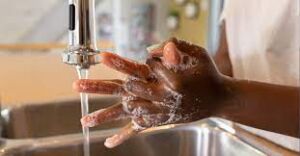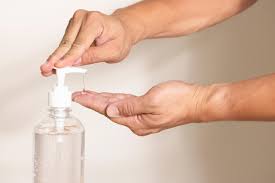A Step-by-Step Guide of Handwashing Techniques for Everyday Hygiene and Safety
Handwashing is a critical element of personal hygiene and public health. It involves the use of soap and water to cleanse the hands from any dirt, bacteria, or viruses. Handwashing not only helps prevent the spread of infectious diseases but can also protect against allergies and foodborne illnesses. Studies show that proper handwashing can reduce germ transmission by up to 99.9%, significantly reducing one’s risk for infection and illness. Additionally, it takes less than 20 seconds for proper handwashing to take effect, making it an easy and effective way to help maintain good health in both individuals and communities alike. Please keep reading for details on the following topics:
Overview of handwashing
Ways in which germs are spread
Ideal time to wash the hands
Steps to handwashing
Hand sanitizer

OVERVIEW OF HANDWASHING
Is recommended with soap and water for at least 20 seconds or with an alcohol-based hand sanitizer to eliminate germs from the hands
It is advised that the hands be washed with clean, running water
It is best to keep fingernails short and remove the ring before hand washing, as germs thrive under the nails and jewelry
HOW GERMS ARE SPREAD
Nose, mouth, or eyes to hands to others: by sneezing, coughing, or rubbing the eyes
Hands to food: from unclean hands to food by an infected food preparer
Food to hands to food: from raw foods, such as chicken, to hands while preparing a meal
Animals to people: hands after petting animals or touching any surface or person
Infected person to hands to other people: someone cleans a patient or linen soiled from diarrhea does not immediately wash the hands, the germs can be passed on to others
THE IDEAL TIME TO WASH THE HANDS
Before, during, and after preparing food
Before and after eating food
Before and after caring for a sick person
Before and after treating a cut or wound
Before entering or leaving a public place
Before inserting or removing contact lenses
After using the toilet
Before taking medication, such as pills or eye drops
After changing diapers or cleaning up a child
After blowing one’s nose, coughing, or sneezing
After touching an animal, animal feed, or animal waste
After handling pet food or pet treats
After touching garbage
After smoking
After handling money or receipts
After shaking hands with others
If hands are visibly dirty or greasy
Touching an item or surface that is frequently touched by other people, such as door handles
STEPS TO HANDWASHING
Remove all jewelry
Open the tap and adjust the flow rate
Wet hands under the running water
Apply soap – liquid soap is recommended (bar soap harbors germs)
Rub hands vigorously for 20 – 30 seconds
Wash all surfaces including:
Back of the wrists
Wrists
Between fingers
Tips of fingers
Thumbs
Rinse well, keeping the hands pointed upward so the water runs from the cleanest to the most contaminated place
Dry the hands carefully with paper or a clean cloth towel
Turn off faucet with towel and open the door with towel
HAND SANITIZERS

Hand sanitizers are becoming increasingly popular due to their effectiveness in helping reduce the spread of infectious germs and bacteria. Not only are hand sanitizers proven to be an effective tool for reducing the transmission of germs, but they are also affordable, easy to use, and portable. When used properly, hand sanitizers can help prevent the spread of viruses, such as influenza and other contagious illnesses. Hand sanitizers work by killing harmful bacteria on contact and providing a layer of protection against further infection. They can also be used when soap and water is not available, making them an ideal solution for people who travel or need quick access to clean hands on the go.
HOW TO USE A HAND SANITIZER
Apply the gel product to the palm of one hand (read the label to learn the correct amount)
Rub your hands together
Rub the gel over all the surfaces of the hands and fingers for about 20 seconds or until they become dry
Disclaimer: The information provided in this content is for general informational purposes only. It is not intended as medical or healthcare advice, diagnosis, or treatment. Always seek the advice of a qualified healthcare professional with any questions you may have regarding a medical condition or healthcare decisions.

